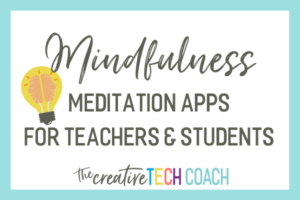Social networking is very common in the lives of most students these days. Even my 2nd graders know what FaceBook and Twitter are. My school district gave professional development on Edmodo. An assessment strategy that was suggested in my district was Tweet Your Answer. While using Edmodo and Twitter are not likely formative assessment strategies for my second grade class, this type of utilization of social media for the upper level grades is possible. Its a way of connecting with students using a form of media they are familiar with.
Some issues that may arise, though, is that not all districts allow social media. In my district, for instance, FaceBook is blocked. Perhaps Twitter is, too, but I don’t know because I rarely “tweet”. However, to get around this, all teachers and students have to do is rely on their cellular networks to tweet their tweets . . . But I digress . . . There may be some great ideas about using social networking for educational purposes, but when it involves students, I think we may be getting into some murky waters in regards to educational confidentiality. Further, Holder (2010) points out that student work cannot be posted on the internet without the student’s or the student’s parents’ permission. This could be an extremely delicate situation with students in middle or high school, because the majority of these students are still minors. There may be questions to whether their parents allow them to use social networks and/or whether their parents would want their educational information (e.g. answers to questions or specific assignments) posted on social media.
I think that there are a lot of great ideas about using social media to motivate students, but we definitely need to investigate the long-term effects before it becomes the norm.
References




2 Responses
Hi Ashley,
Thanks for your post. I am somewhat like you with the Twitter. I actually have an account also, but rarely "tweet" either. My students laugh at me because I have not mastered the fine art of posting intelligently on Twitter and Instagram. I can put pictures up, but the way that they make comments, and tag, and hashtag is a little greek to me. So when I really want to post something on either, I give my phone to one of my students (they are all eager to do that for us), and tell them to put it on and kind of tell them what I want to say so that it looks normal. Thanks again.
Ashley,
Your comments about utilizing social networking in a 2nd grade classroom make perfect sense from the outside. There are a lot of life lessons remaining for children of that age before they step into the world of online collaboration. My oldest son is in the 3rd grade, and I am still not convinced he "needs" a Facebook page, no matter how strong his arguments might be. However, there are still opportunities for social networking in the earlier grades, such as a classroom Facebook/Twitter page where parents can view updates on their students' classroom activities. It serves many purposes, but a couple basics are it replaces the group email and it gives parents a chance to demonstrate proper use of social media with their young learners.
You mentioned formative assessment, and it is clear there is no purpose for 2nd graders to use social media as a valid measure of their knowledge retention. Yet, with the growing acceptance of MOOCs and other online educational opportunities, it is not too far-fetched to think social networking tools might become an assessment tool for older learners (high school, maybe middle school) in the not-so-distant future. How to implement that is a completely different topic altogether, but I would be surprised if my aforementioned son is not using some form of social media by the time he finishes high school.